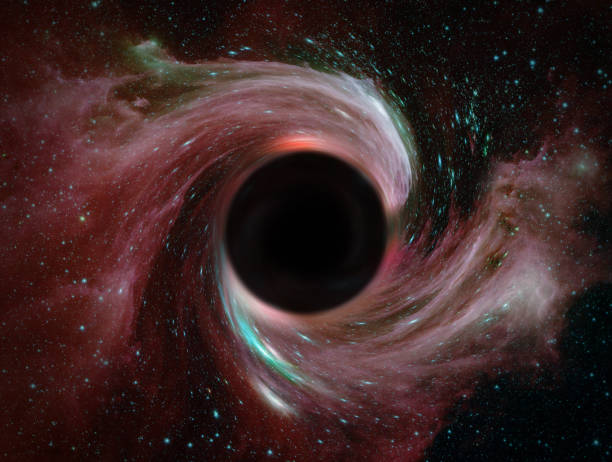Education
Dark Matter, What Are They?

Dark matter is a fascinating and mysterious concept in astrophysics that has puzzled scientists for decades. Despite its enigmatic nature, researchers have been working tirelessly to understand this elusive substance and its implications for our understanding of the universe.
At its core, dark matter is a hypothetical form of matter that does not emit, absorb, or reflect light, making it invisible and undetectable through traditional astronomical methods. Despite its invisibility, dark matter exerts a gravitational pull on visible matter, such as stars and galaxies, influencing their movements and distributions throughout the cosmos.
The existence of dark matter was first proposed in the 1930s by Swiss astronomer Fritz Zwicky, who noticed discrepancies between the observed mass of galaxy clusters and their gravitational effects. Zwicky suggested that there must be an unseen form of matter that was contributing to the gravitational forces at play in the universe.
Since then, a wealth of observational evidence has emerged to support the existence of dark matter. One of the most compelling pieces of evidence comes from studies of the rotation curves of galaxies. These curves represent the velocities of stars within galaxies as a function of their distance from the galactic center. Observations have shown that the rotation curves do not follow the predicted patterns based on the visible matter alone, indicating the presence of unseen mass – dark matter.
In addition to galaxy rotation curves, other phenomena, such as gravitational lensing and the cosmic microwave background radiation, also provide indirect evidence for the existence of dark matter. Gravitational lensing occurs when the gravitational field of dark matter bends and distorts light from distant objects, creating optical illusions that reveal the presence of unseen mass.
Despite the mounting evidence for dark matter, its true nature remains a mystery. Scientists have proposed various theoretical explanations for dark matter, with one of the leading candidates being a type of particle that interacts weakly with ordinary matter, known as a WIMP (Weakly Interacting Massive Particle).
Efforts to detect dark matter directly have been ongoing for years, with experiments conducted deep underground and in space in search of potential dark matter particles. While no direct detection has been made thus far, the pursuit of dark matter continues to be a major focus of research in astrophysics.
In conclusion, dark matter represents a fascinating frontier in our understanding of the universe. While its exact nature remains elusive, the body of evidence supporting its existence is substantial and continues to grow. By unraveling the mysteries of dark matter, scientists hope to gain deeper insights into the underlying structure and evolution of the cosmos, shedding light on the fundamental forces that govern the behavior of matter on the largest scales.
As our understanding of dark matter evolves, new questions and challenges arise. The relationship between dark matter and dark energy, another mysterious cosmic component that drives the accelerated expansion of the universe, remains a topic of intense investigation. Some theories even suggest that dark matter may interact with dark energy, adding another layer of complexity to the cosmic puzzle.
In addition to its gravitational effects, dark matter may have played a crucial role in the formation and evolution of structures in the universe, such as galaxies and galaxy clusters. Understanding how dark matter influences the growth of cosmic structures can provide valuable insights into the processes that have shaped the universe as we know it today.
Despite the challenges posed by the elusive nature of dark matter, scientists remain undeterred in their quest to unlock its secrets. Advances in observational techniques, theoretical modeling, and experimental technologies continue to push the boundaries of our knowledge and offer new avenues for exploring the mysteries of the cosmos.
In the quest to unravel the mysteries of dark matter, collaboration and interdisciplinary research play a crucial role. Scientists from diverse fields, including astronomy, particle physics, and cosmology, come together to tackle this complex puzzle from different angles, each contributing unique expertise and perspectives to the search for answers.
In conclusion, dark matter stands as a testament to the boundless curiosity and ingenuity of the human mind. As we continue to probe the mysteries of the universe, the enigma of dark matter serves as a reminder of the vast unknown waiting to be discovered. With each new discovery and breakthrough, we edge closer to unraveling the secrets of dark matter and unlocking a deeper understanding of the cosmos that surrounds us.
-

 Breaking News3 years ago
Breaking News3 years agoBREAKING: CBN Redesigns Naira Notes
-

 Breaking News2 years ago
Breaking News2 years agoBREAKING: Tinubu Considers Temporary Subsidy On Petrol
-

 Breaking News2 years ago
Breaking News2 years agoJUST IN: Gbajabiamila Dies In UK
-

 News3 years ago
News3 years agoDrama As Church Gives Certificate Of Virginity To Ladies After Testing Them (See Photos)
-

 Crime3 years ago
Crime3 years agoUproar As Student Teacher On Teaching Practice Impregnates 24 Girls, Headmistress, Four Female Teachers
-

 Breaking News9 months ago
Breaking News9 months agoJUST IN : Sacked Osun LG Chairman Killed Few Minutes After Returning To Office
-

 Breaking News2 years ago
Breaking News2 years agoBREAKING: Dangote Speaks As BUA Reduces Price Of Cement
-

 Crime3 years ago
Crime3 years agoJUST IN: Gunmen Storm Osogbo, Kill Man, Daughter Few Hours After His Wife Put To Bed (Photos)
